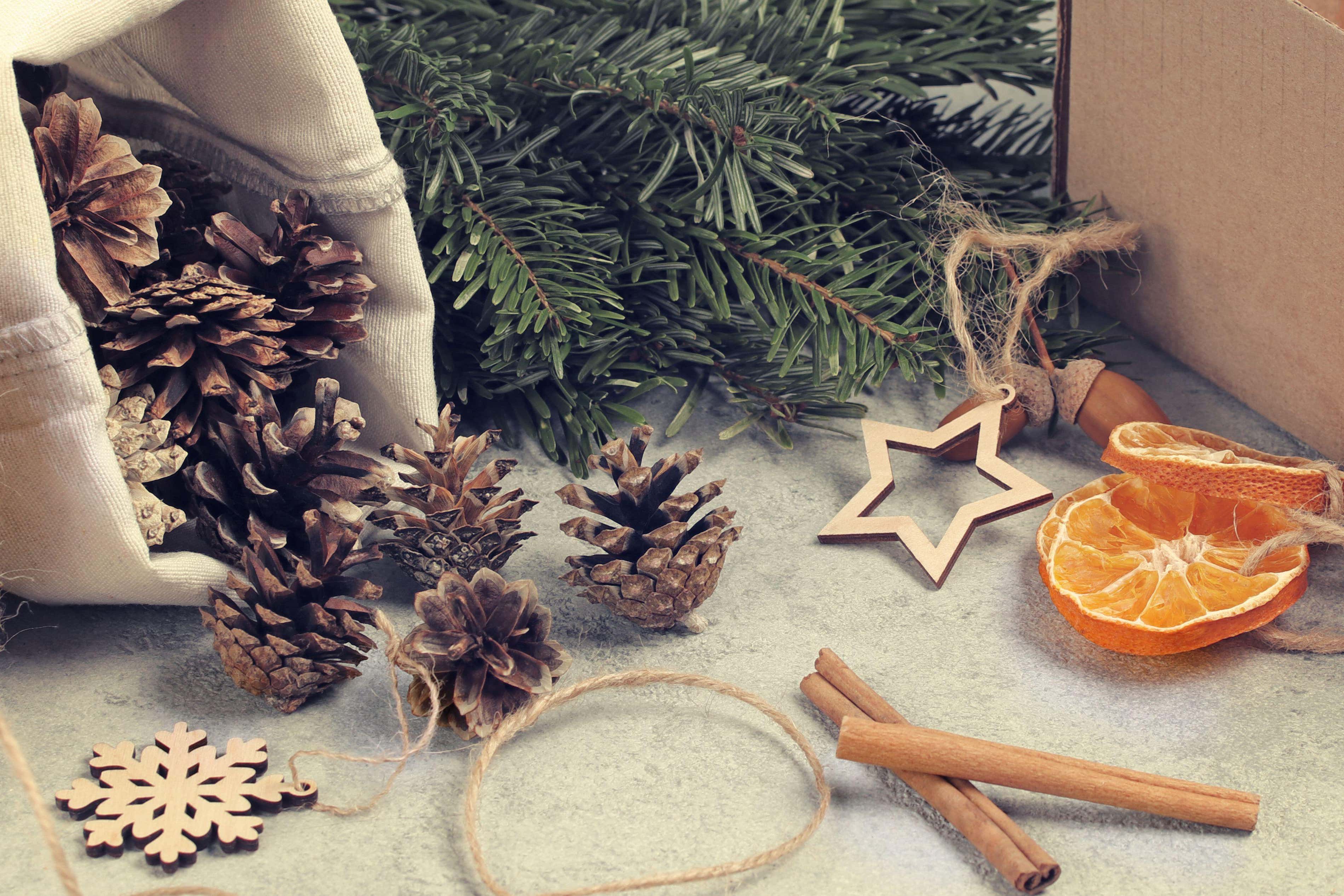The Independent's journalism is supported by our readers. When you purchase through links on our site, we may earn commission.
Natural ways to decorate your Christmas tree this winter
Houseplants, flowers and foliage can all be used to dress the tree. By Hannah Stephenson.

Your support helps us to tell the story
From reproductive rights to climate change to Big Tech, The Independent is on the ground when the story is developing. Whether it's investigating the financials of Elon Musk's pro-Trump PAC or producing our latest documentary, 'The A Word', which shines a light on the American women fighting for reproductive rights, we know how important it is to parse out the facts from the messaging.
At such a critical moment in US history, we need reporters on the ground. Your donation allows us to keep sending journalists to speak to both sides of the story.
The Independent is trusted by Americans across the entire political spectrum. And unlike many other quality news outlets, we choose not to lock Americans out of our reporting and analysis with paywalls. We believe quality journalism should be available to everyone, paid for by those who can afford it.
Your support makes all the difference.If you’re fed up with plastic baubles and glitter on your Christmas tree decorations ending up all your hands and floor, it may be time to go for more natural adornments this festive season.
Indeed, you can use flowers, foliage and even houseplants to spruce up your Christmas tree, often at a fraction of the cost of buying expensive, non biodegradable decos. Here are some ideas…
Houseplants
Find a place for your houseplants within your tree, if they are not too big. You could put them around the base of the tree to hide the stand, or embed them in their pots among the branches for a stand-out effect
Dobbies Garden Centres stylist Rebecca Stanton, says: “Bulking out Christmas trees with real and foraged foliage has been on the rise for a few years now, but this year’s trend takes it a step further by using real houseplants to create bursts of seasonal colour among branches for a truly unique effect.
“For maximum impact, I’d suggest using a mix of fragrant foliage like eucalyptus and colourful houseplants like the popular striking anthurium. This will help you create a beautiful natural display, that offers a lovely alternative to traditional lights and baubles.”
She offers the following step-by-step guide on decorating your tree with houseplants:
1. Once you’ve got your pot-grown or freshly cut tree home, position it in a spot away from direct heat sources and assess any gaps that can be used to hold houseplants.
2. Gather your chosen houseplants and ensure they are in small, lightweight pots that easily be nestled into the tree’s branches.
3. Before placing your houseplants in the tree, give them a thorough watering in the sink to keep them hydrated, letting the water drain out completely.
4. Start placing the pots in the tree, nestling them securely in the branches and ensuring they remain upright. If the pots need extra support, you can secure them to the tree’s branches with some floristry wire or twine.
5. Once all your houseplants are placed in the tree, add foraged foliage such as eucalyptus for added texture and interest, using the stems to fill in any gaps.
6. To bring your botanical Christmas tree look together, style some succulents, ferns and trailing ivy at the base of your tree in colourful pots. You can also wind some twinkling lights around your pot or tree skirt to illuminate the display and make it extra festive.
7. Throughout December, check on your houseplants and if they need watering, carefully remove them from the tree to do so, adding them back into the display once all water has drained out. You can also mist your display throughout the month to give it a hydration boost, and of course, you should ensure your tree is regularly watered.
Foliage and flower stems
If you don’t feel confident enough to add houseplants, or don’t have them in your home, foliage and flower stems work well.
Chris Waugh, Bloom & Wild florist, says: “Try adding foliage and flower stems amongst the tree’s branches, to fill in any gaps and add an extra something. Stems that will dry out naturally would work best, like hypericum berries, rosemary, poppy seed heads, baby’s breath (gypsophila) and sea lavenders (statice).”
Herbs
Evergreen herbs such as rosemary or dried lavender can be tied in sprig clusters and positioned deep into the tree to add aromatic fragrance, which should last over the Christmas period.
Leaves, dried fruits and cones
You could also make garlands from fallen leaves on thin wire and spray them gold, suggests award-winning florist Judith Blacklock, founder of the Judith Blacklock Flower School, who will be running a number of festive-themed courses in the run-up to Christmas.
Add dried fruits such as orange slices, scented cones which can be wired to attach to the tree, and bundles of cinnamon sticks with hessian ribbon, she suggests.
“One of my favourite ideas is to take branches of deciduous holly (Ilex verticillata) and push the stem ends towards the base of the tree, so that you have colour and interest not just at the ends. The stems are strong and long lasting and come in red and orange,” Blacklock adds.
Bundles of dried flowers look attractive, especially when wrapped in eye-catching ribbon, while dried hydrangea heads are also showstoppers in a Christmas tree and easy to spray a colour of your choice, she suggests.